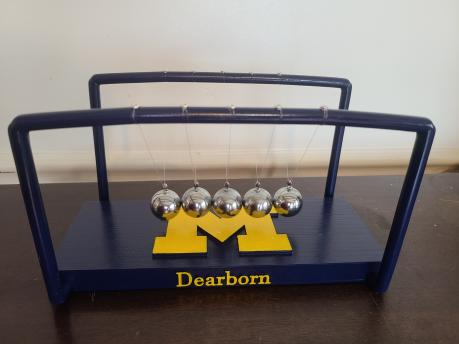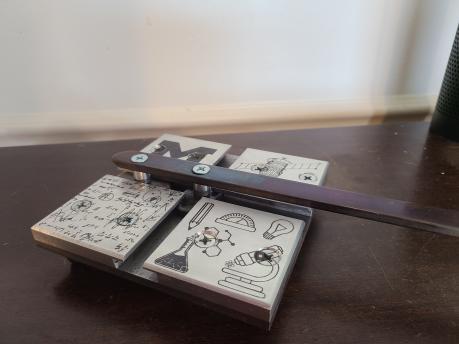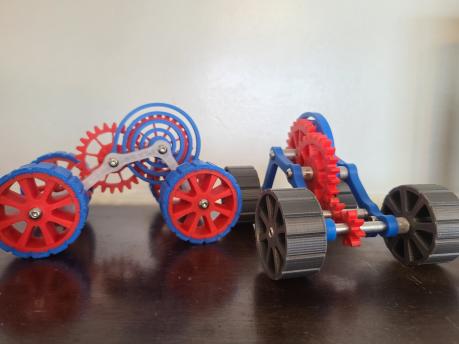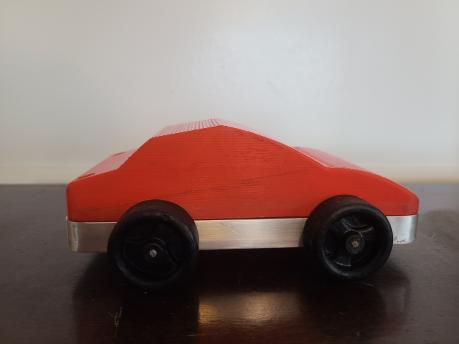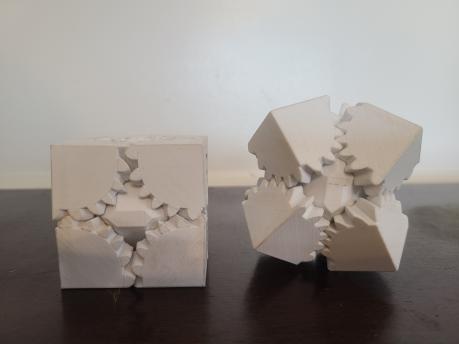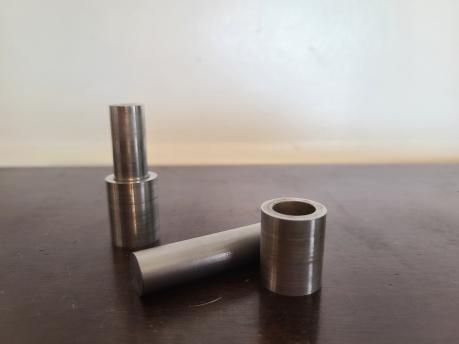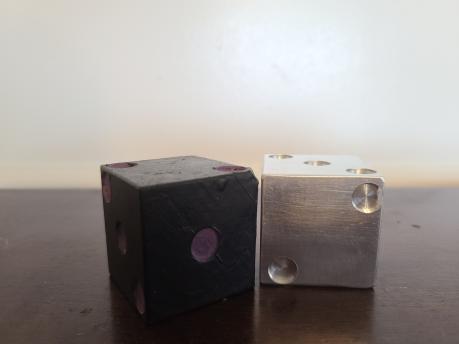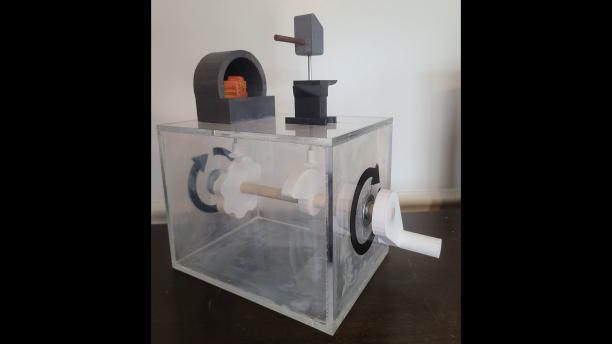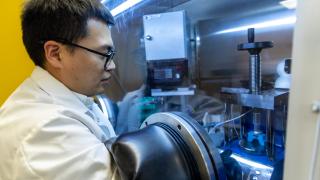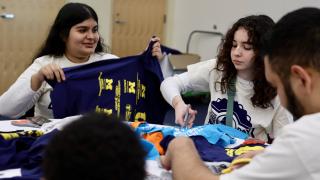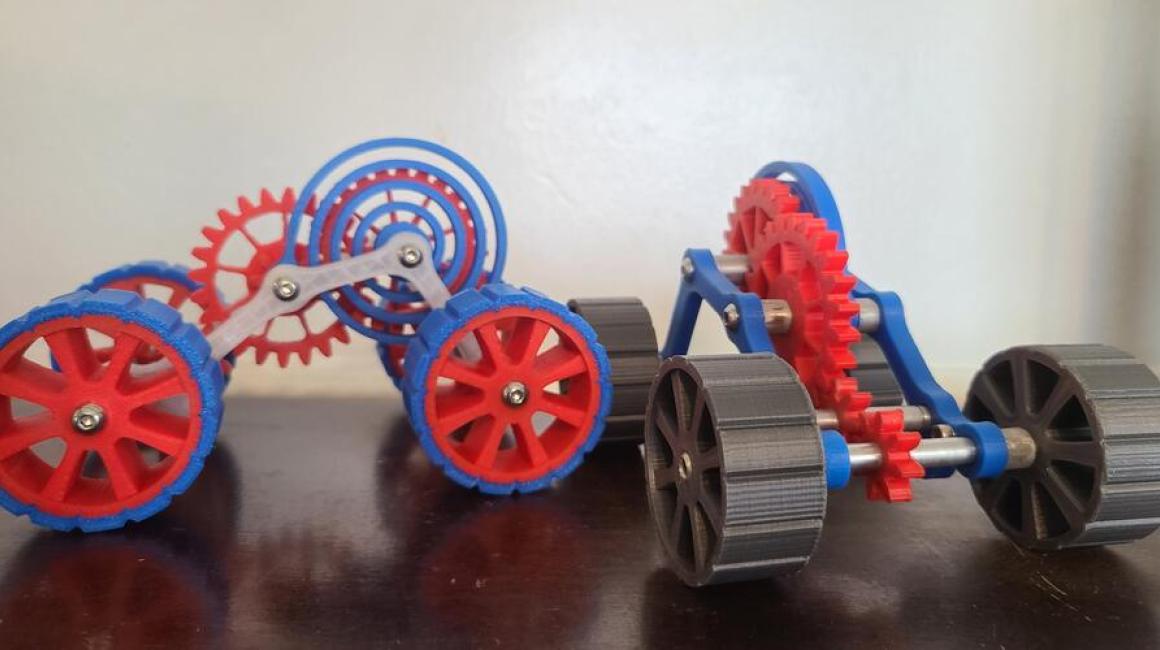
You have to hand it to Assistant Professor Georges Ayoub for finding ways to make engineering education both rigorous and fun. A couple semesters ago he had his students concept, design and manufacture original board games — a highly detailed process that involves a surprisingly wide range of skills in the engineer’s toolbox. He got such good feedback that this year, he decided to up his game with a follow-up project in one of his manufacturing classes. The challenge: build STEM learning toys and then gift them to the Dearborn Toy Library, a local nonprofit that lets kids checkout toys, including many educational ones.
Ayoub hatched this plan with Executive Director Mary Gladstone-Highland, who co-founded the toy library with her son a few years back. (Ayoub also serves on the board.) She says there’s a ton of interest in STEM toys nowadays, but there’s often a perception among parents that they’re prohibitively expensive. She’s not sure if that’s actually true — or if other, flashier, highly marketed toys are just better at attracting kids’ attention and parents’ credit cards. Regardless, that makes STEM toys a great fit for the toy library. Since folks can borrow them instead of having to buy them outright, it stretches families’ budgets and creates a lot more access to educational toys.
Making a bunch of STEM toys and gifting them to the library sounded like a great idea, but Ayoub admits he wasn’t sure what they were going to end up with. The process of not only designing, but building a finished toy that a kid is going to enjoy, not hurt themselves with, and also not break in two minutes is a pretty tall challenge for a single semester. Students would have to quickly work through the design and prototypes phases. And then they’d actually have to manufacture a finished product — which would involve learning to use various manufacturing systems in our MSEL lab, including 3D printers, welding equipment and woodworking tools.
As it turned out, Ayoub didn’t have anything to worry about. The students came through with some pretty amazing, sturdily built toys that he calls “beautiful and thoughtfully designed.” One team created a version of a Do Nothing Machine — a classic STEM toy that dates back to the time of the Greek mathematician, physicist and engineer Archimedes. Jacob Gaudette and his partners chose another classic — Newton’s cradle. The line of metal spheres is strung and suspended from a small scaffold such that when you draw back the sphere on one end and release it, it strikes the others, sending the one on the opposite end flying and setting off a chain reaction of collisions. “I mean, I have a handle on the physics of what makes it work; we’ve studied all that stuff in our classes,” Gaudette says, referring to principles like the conservation of energy and conservation of momentum, which the cradle demonstrates really clearly. “But you see it happen and it still looks like magic. I would have loved to have that toy as a kid.”

